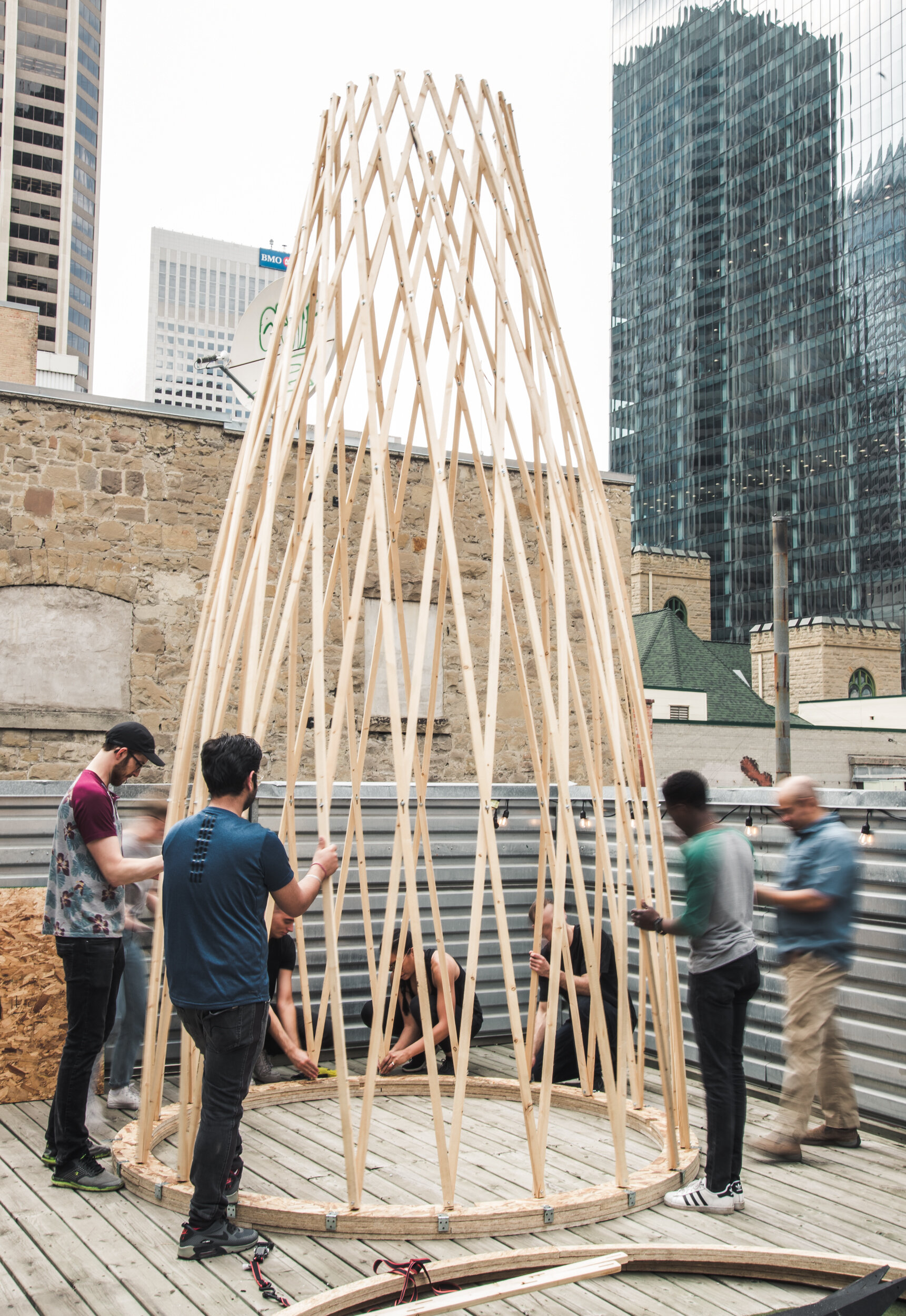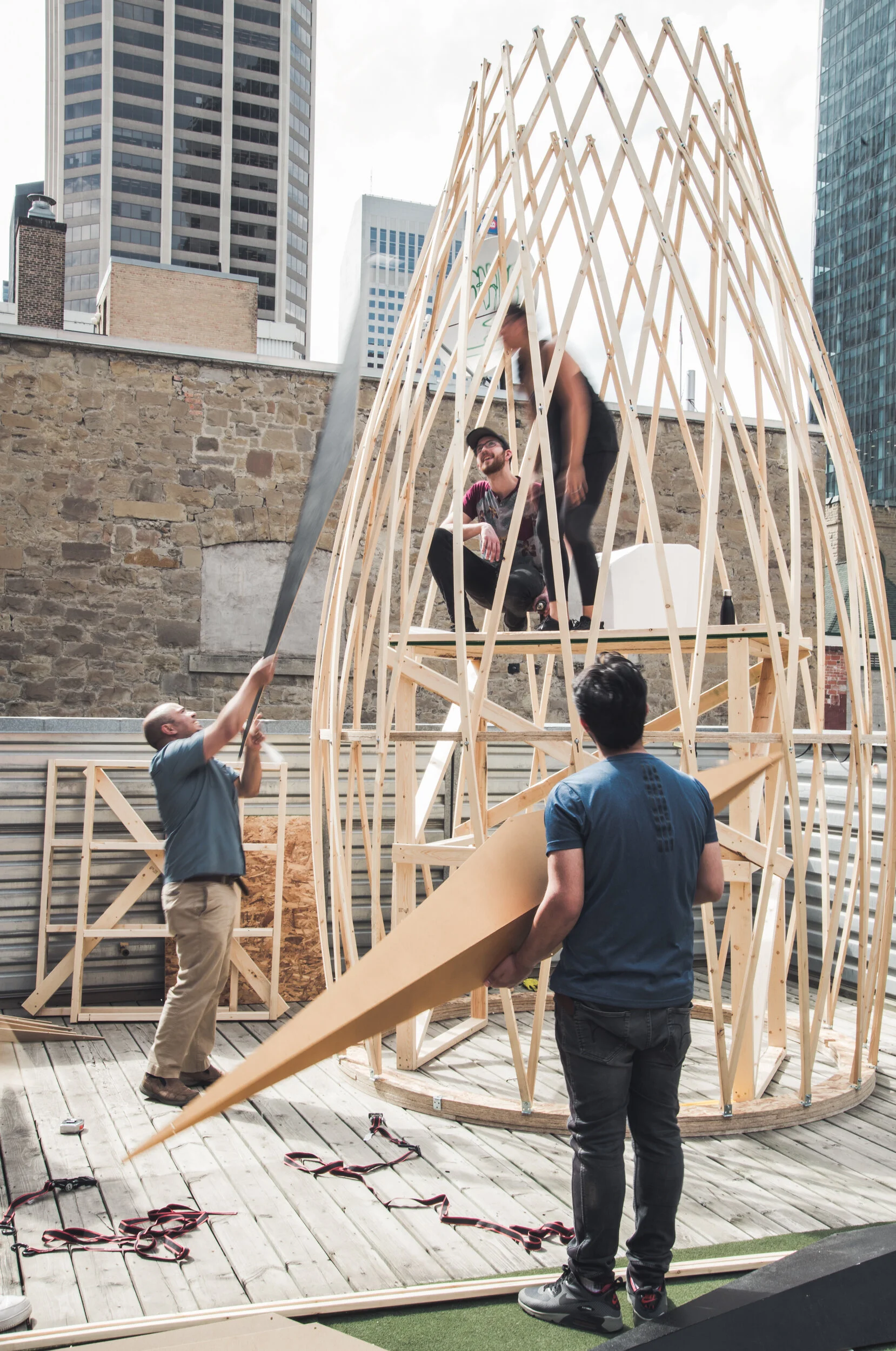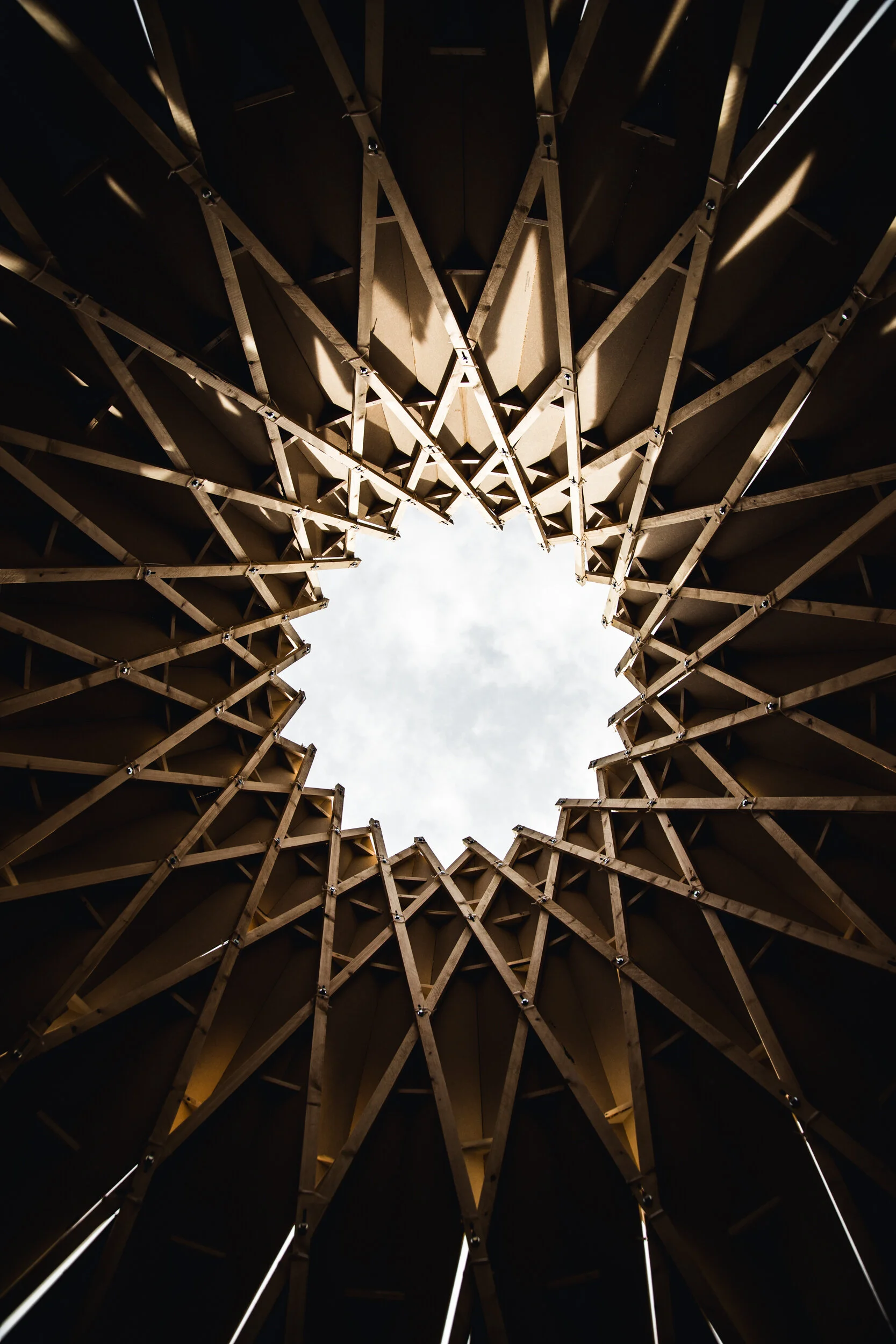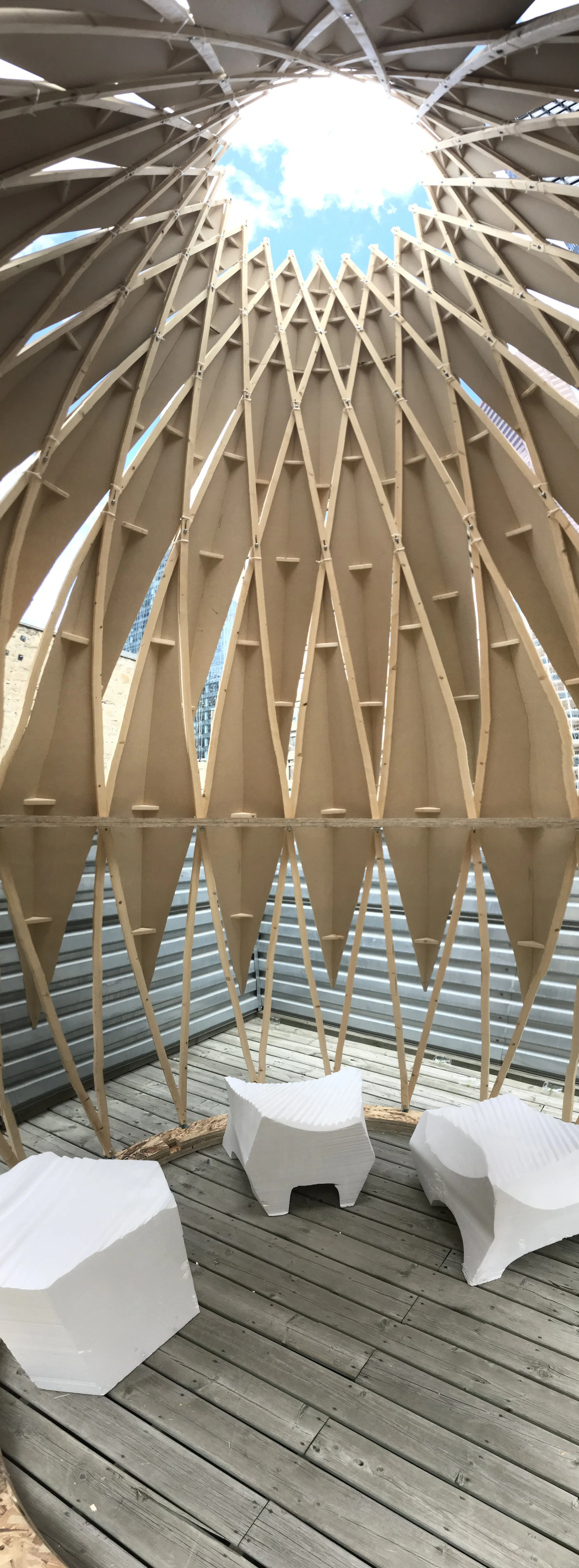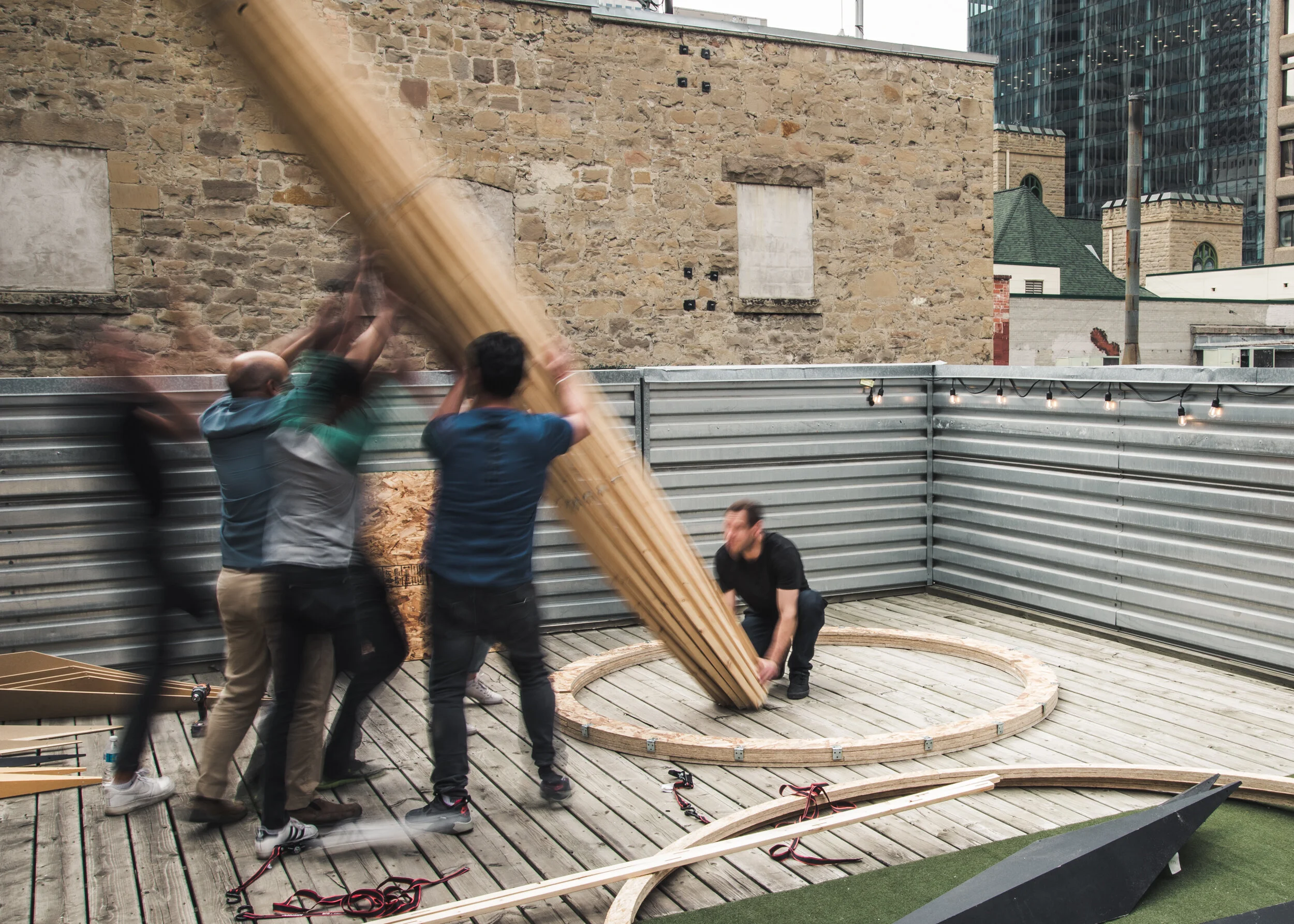
Deployable Architecture.
2019 SAPL Gridshell Pavilion
Team: EVDS 681 Class, LID
Lead Design, Fabrication , Assembly
Instructor: Mauricio Rubio Soto
ICETAD 2019
A digital form finding process rooted in physical iteration.
The goal of this design-build project was to employ both traditional physical form-finding techniques as well as contemporary technologies such as digital design and manufacturing to design and build a lightweight, self-supporting, rapidly deployable grid-shell structure.
The digital form finding for this project utilizes Grasshopper scripts that consist of two methods. The first one manipulates anchor points of a grid and uses the dynamic relaxation approach to reach a static equilibrium. The second applies geodesic lines to 3D surfaces of organic forms.
A few design concessions were made regarding the angled top, doorway, and overall diameter in order to streamline prefabrication of members, create a door that fit the angled design of the grid, and accommodate the material properties of the timber type, size, and length we would be using.
Every aspect of the material composition had simplicity, coherence, and disassembly in mind. The timber grid structure was mechanically fastened with nuts and bolts, which lent itself to the project’s deployable and environmental considerations.
foundation & hinge at joints for timber lathes
Each wooden member had identical intersection locations; thus, the members could be stacked to CNC elongated wholes. These openings at connection points allowed for longitudinal movement of the bolts while assembling and bending the pavilion in shape.
Due to the collapsible and portable nature of the design, all pieces of the pavilion were able to fit comfortably into a 17’ cube van. To assemble on-site, first the foundation ring was setup with hinges attached. The gridshell was quickly erected into place.

